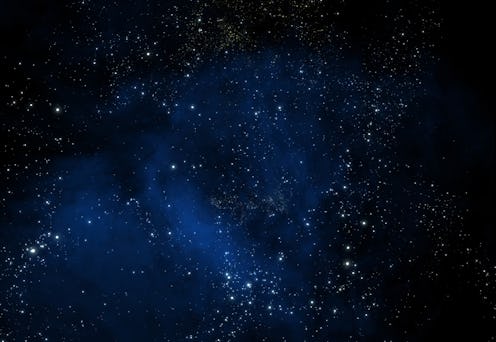
"What's your sign?" It's a pick-up line for the ages, and even those who don't believe in astrology know the answer and can probably name at least a few of their supposed characteristics. But for those born in October and November, I have some weird news: Your zodiac sign might have changed. NASA has announced the discovery of a 13th zodiac sign, one that falls between Scorpio (Oct. 23 to Nov. 21) and Sagittarius (Nov. 22 to Dec. 21). Just don't tell an astrologer that, though, because not everyone agrees that the shift has actually occurred.
Though paying close attention to the stars, planets, sun, and moon have been survival tactics pretty much since the dawn of humankind, the practice of astrology that we most closely follow today, "Western Astrology," was established over 2,000 years ago by the Babylonians. It was then refined by the Greeks and preserved by the Arab Empire, until its re-emergence in Medieval Europe. "As above, so below" became the mantra.
Until the 17th century, astronomy and astrology were indistinguishable, considered two parts of one discipline. As the Scientific Revolution and the Age of Reason rolled around, though, a rift formed. It has remained as we've moved into the modern day, with astronomy and astrology being considered two very different things.
When we think of NASA, we usually associate it with astronomy, rather than astrology. So, if you're now wondering, "Wait, why TF is NASA talking about the zodiac right now?" — which we usually consider astrology's territory — well, here's why. The zodiac is actually the belt of constellations through which the sun, moon, and planets make their way — that is, it's astronomy. Western Astrology uses these 12 constellations as the basis for the Tropical Zodiac signs, having spent literally thousands of years observing the ways in which the constellations interact mathematically with the sun, moon, planets, and one another. There are, sure enough, 12.
Or at least, that's what we thought. Until NASA recently identified a 13th: Ophiucus. Apparently it covers people born between Nov. 29 and Dec. 17.
Here's the thing: the stars have been shifting, slowly but surely, since the initial charts were drawn up all those thousands of years ago. The heavens are not static. The zodiac belt functions as a sort of "highway" across which the sun travels over the course of a year (at least, as it appears to humans). Ophiucus has actually been around for quite a while, but because the sun only spends 19 days in that sign, ancient astrologers chose to kind of, um, just ignore it. And as Collective Evolution notes, it's likely that astrologers will continue to do so.
For those of us with a peripheral interest in astrology, it can seem simple enough. 12 months, 12 "signs" — got it. But any sort of additional delving into the practice can reveal, like... a lot. There's heavy math involved, way more than I'm really capable of engaging with. It's a thousands-year-old discipline. And you know what? I'm going to let them do their thing.
And if that thing is saying that NASA is wrong in identifying Ophiucus as the 13th zodiac sign, then so be it. I wasn't born in October and November anyway.